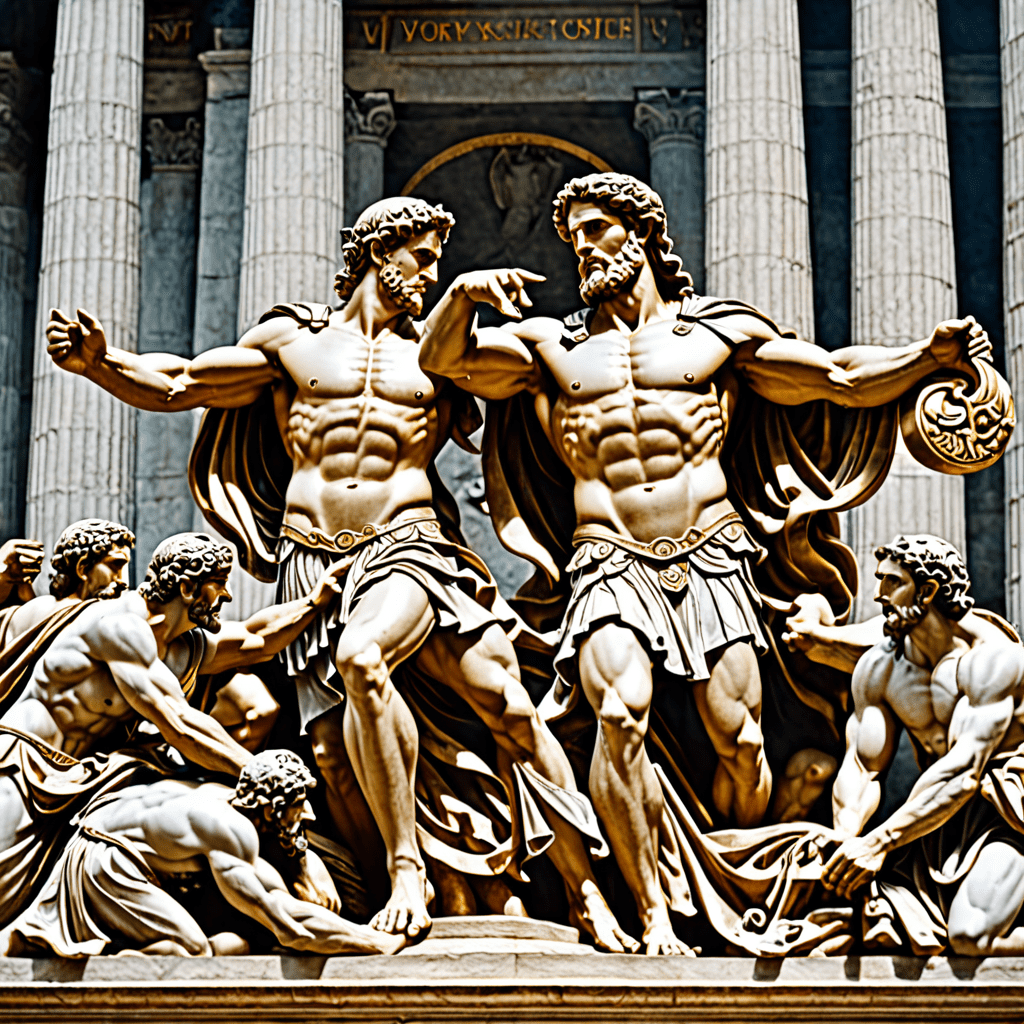The Flood as a Storytelling Device: Myths That Capture the Imagination
I. Introduction
Storytelling is a fundamental aspect of human culture, serving as a means of communication, education, and entertainment. It allows societies to pass down traditions, values, and beliefs through generations. Among the myriad themes explored in storytelling, flood myths stand out for their profound significance across various civilizations.
Flood myths have emerged independently in numerous cultures, often featuring catastrophic deluges that reshape the world and the people within it. From the ancient Mesopotamians to indigenous tribes, these narratives encapsulate a shared human experience of disaster, survival, and renewal.
This article aims to explore the role of flood myths as a storytelling device, examining their themes, cultural significance, and psychological impact. By analyzing various examples from different civilizations, we can gain a deeper understanding of how these ancient stories resonate with contemporary audiences.
II. The Universal Theme of Catastrophe
Flood myths often serve as powerful metaphors for catastrophe, embodying themes of purification and renewal. They remind us of the fragility of human existence and the unpredictability of nature.
A. Floods as Metaphors for Purification and Renewal
In many cultures, floods symbolize a cleansing force, washing away the old to make way for the new. This duality of destruction and rebirth is a recurring motif:
- Purification of the earth and its inhabitants.
- Renewal of life and opportunities for a fresh start.
B. Psychological Impact of Catastrophic Events on Storytelling
Catastrophic events, such as floods, have a profound psychological impact on communities. They force individuals to confront their vulnerabilities and resilience:
- Storytelling becomes a means of processing trauma.
- Myths reflect collective fears and hopes for recovery.
C. The Role of Disaster in Shaping Human Narratives
Disasters like floods shape human narratives by highlighting the struggle for survival and the quest for meaning in chaos. They serve as cautionary tales, illustrating moral lessons and the consequences of human actions.
III. Ancient Mesopotamian Myths
Mesopotamia is home to some of the earliest known flood myths, with narratives that explore themes of mortality and divine intervention.
A. The Epic of Gilgamesh: The Great Flood Story
1. Overview of the Narrative
The Epic of Gilgamesh features a significant flood story in which the hero, Utnapishtim, survives a divine flood sent to destroy humanity. He builds a massive boat, saving his family and various animals.
2. Themes of Mortality and Divine Intervention
This myth explores the themes of mortality, the quest for immortality, and the role of the gods in human affairs, ultimately reflecting on the transient nature of life.
B. The Atrahasis Epic: Humanity and Divine Conflict
1. Summary of the Myth
The Atrahasis Epic tells the story of humanity’s creation and the subsequent flood sent by the gods to eradicate them due to their noise and overpopulation. Atrahasis, the hero, is warned by the god Ea and builds an ark to survive.
2. Moral and Ethical Implications
This myth raises questions about the relationship between humanity and the divine, highlighting the consequences of human behavior and the moral responsibilities of both gods and mortals.
IV. The Biblical Account of Noah’s Ark
The flood narrative in the Bible, particularly in the Book of Genesis, is one of the most well-known and influential stories of all time.
A. Summary of the Genesis Flood Narrative
In the Genesis account, God decides to flood the earth to cleanse it of wickedness, sparing only Noah, his family, and pairs of every animal species. Noah builds an ark according to divine instructions.
B. Symbolism of the Ark and the Covenant
The ark symbolizes salvation and divine mercy, while the covenant established after the flood represents God’s promise never to destroy humanity again with water. This narrative has shaped Judeo-Christian values regarding morality and accountability.
C. Influence on Judeo-Christian Values and Ethics
The story of Noah’s Ark has had a lasting impact on Judeo-Christian ethics, emphasizing themes of obedience, faith, and the importance of preserving life.
V. Flood Myths in Indigenous Cultures
Indigenous cultures also possess rich flood narratives that convey essential lessons and cultural significance.
A. The Ojibwe Flood Story
1. Key Elements and Characters
The Ojibwe flood story involves a great flood that was sent to cleanse the earth, with a hero who saves his people and the animals. This narrative highlights the importance of harmony with nature.
2. Cultural Significance and Lessons
This story serves as a reminder of the interconnectedness of all life and the necessity of respecting the environment.
B. The Maori Legend of the Great Flood
1. Overview and Main Themes
The Maori legend includes a great flood that destroys the world, emphasizing themes of survival, resilience, and the strength of community.
2. Connection to Land and Identity
Flood myths in Maori culture reinforce the connection to land and identity, illustrating how natural disasters can shape cultural narratives and community bonds.
VI. The Role of Flood Myths in Ancient Civilizations
Comparative analysis of flood myths reveals common themes and societal values across different ancient civilizations.
A. Comparative Analysis of Egyptian, Greek, and Hindu Flood Myths
Flood myths in ancient Egypt, Greece, and India share similarities and differences:
- Egyptian myths often depict the inundation of the Nile as a life-giving force.
- Greek myths, such as the story of Deucalion, focus on themes of rebirth after destruction.
- Hindu texts describe floods as a cyclical phenomenon, reflecting the eternal nature of creation and destruction.
B. Connection to Societal Values and Fears
These myths reflect societal values, including reverence for nature, the power of the divine, and the human struggle against chaos.
C. Flood Myths as a Reflection of Environmental Realities
Flood myths often arise from real environmental experiences, serving as a narrative response to the natural world and its challenges, emphasizing the need for resilience and adaptation.
VII. The Symbolism of Water in Flood Narratives
Water plays a central role in flood narratives, serving as both a life-giving and destructive force.
A. Water as a Life-Giving and Destructive Force
Water represents duality; it can nourish life but also bring devastation through floods.
B. Representations of Chaos and Order in Mythological Structures
Flood narratives often depict the transition from chaos to order, reflecting the human desire for stability and understanding in the face of disaster.
C. The Transition from Destruction to Rebirth
Many flood stories conclude with themes of rebirth, highlighting the cyclical nature of life and the potential for regeneration following catastrophe.
VIII. Modern Interpretations and Adaptations
Flood themes continue to resonate in contemporary literature and film, reflecting modern concerns and interpretations.
A. Flood Themes in Contemporary Literature and Film
Modern adaptations of flood myths often explore themes of survival, environmentalism, and the human condition:
- Films like “The Day After Tomorrow” reflect societal fears about climate change.
- Literature often revisits these themes to address modern dilemmas.
B. How Modern Storytelling Reshapes Ancient Myths
Contemporary storytelling reshapes ancient myths to resonate with current audiences, addressing relevant issues such as climate change and social justice.
C. The Relevance of Flood Narratives in Today’s Climate Crisis
In light of today’s climate crisis, flood narratives serve as cautionary tales, urging society to reflect on our relationship with nature and the consequences of inaction.
IX. The Psychological and Cultural Impact of Flood Myths




